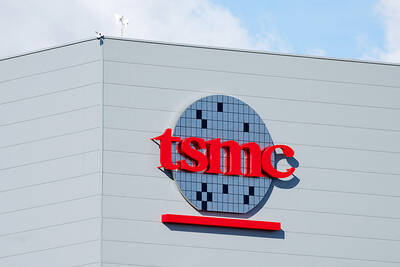Taiwan's cable operators lashed out at government interference in how they run their businesses yesterday in response to restrictions imposed by the Taipei City Government recently.
On Tuesday, the city's Bureau of Information asked cable companies to group channels into categories so that subscribers can choose to opt in or out of different categories in an attempt to reduce the fees people pay before the launch of a new digital TV service this summer. The recommendation follows a cap on charges for the new digital service which was imposed by the bureau's Cable TV Fee Review Committee on June 12.
"We are very annoyed [with government interference]," Charles Wu (吳中立), the CEO of Taiwan cable operator Eastern Multimedia Co (東森媒體科技公司), said yesterday. "We already accepted the price cap imposed by the Government Information Office [GIO] on our new digital service, and now local government is going one step further. We think the level they set is totally unreasonable."
Earlier this year, the GIO set a NT$6,000 limit on the price of the descrambler set-top box needed to decode the dozens of new digital channels that are soon to be transmitted to Taipei residents. The office currently imposes a monthly ceiling of NT$600 for basic cable services.
Some city councilors have challenged Mayor Ma Ying-jeou and the Taipei City Government saying they are in collusion with cable operators to extort viewers. Councillors have even gone so far as to suggest the providers give the boxes away free.
The CEO of China Network Systems Co (中嘉網路) scorned the idea.
"If you want to make a call, you don't ask Chunghwa Telecom to give you a free phone," said Daniel Chang (
Operators said they have already bought the descramblers and are only looking to cover their costs. Eastern Broadband has bought 60,000 descramblers at NT$4,800 each and will be selling them to subscribers for NT$5,000, which can be paid in monthly installments of NT$200.
The operators should also be able to recoup their investments in new equipment and transmission facilities. Eastern Broadband has invested NT$400 million, and China Networks NT$700 million, the companies confirmed yesterday.
"We haven't used a single cent of government money," China Networks' Chang said.
Criticism of the government also comes from outside Taiwan. A media research report published Monday by Hong Kong-based Media Partners Asia says Taiwan over-regulates the local cable television industry.
"The current regulatory environment and the majority of proposed changes to the environment remain unsatisfactory, depriving customers of choice, content and advanced communications services," the paper said.
The report goes further, saying the government's changes undermine the industry and will prevent the GIO from reaching its own target of broadband cable in 80 percent of households by 2006.
Vivek Couto, co-author of the report, said, "There are a lot of investors interested, but they're all going to say it's a waste of time if the government doesn't make a rapid shift in direction."
Taiwan's leading provider threatened to pull the plug on its digital service yesterday if the government didn't get its nose out of the cable industry. "We will simply stop offering the digital service," said Wu. "We can't move. We are bound hand and foot."

Taiwan Semiconductor Manufacturing Co (TSMC, 台積電) secured a record 70.2 percent share of the global foundry business in the second quarter, up from 67.6 percent the previous quarter, and continued widening its lead over second-placed Samsung Electronics Co, TrendForce Corp (集邦科技) said on Monday. TSMC posted US$30.24 billion in sales in the April-to-June period, up 18.5 percent from the previous quarter, driven by major smartphone customers entering their ramp-up cycle and robust demand for artificial intelligence chips, laptops and PCs, which boosted wafer shipments and average selling prices, TrendForce said in a report. Samsung’s sales also grew in the second quarter, up

LIMITED IMPACT: Investor confidence was likely sustained by its relatively small exposure to the Chinese market, as only less advanced chips are made in Nanjing Taiwan Semiconductor Manufacturing Co (TSMC, 台積電) saw its stock price close steady yesterday in a sign that the loss of the validated end user (VEU) status for its Nanjing, China, fab should have a mild impact on the world’s biggest contract chipmaker financially and technologically. Media reports about the waiver loss sent TSMC down 1.29 percent during the early trading session yesterday, but the stock soon regained strength and ended at NT$1,160, unchanged from Tuesday. Investors’ confidence in TSMC was likely built on its relatively small exposure to the Chinese market, as Chinese customers contributed about 9 percent to TSMC’s revenue last

With this year’s Semicon Taiwan trade show set to kick off on Wednesday, market attention has turned to the mass production of advanced packaging technologies and capacity expansion in Taiwan and the US. With traditional scaling reaching physical limits, heterogeneous integration and packaging technologies have emerged as key solutions. Surging demand for artificial intelligence (AI), high-performance computing (HPC) and high-bandwidth memory (HBM) chips has put technologies such as chip-on-wafer-on-substrate (CoWoS), integrated fan-out (InFO), system on integrated chips (SoIC), 3D IC and fan-out panel-level packaging (FOPLP) at the center of semiconductor innovation, making them a major focus at this year’s trade show, according

DEBUT: The trade show is to feature 17 national pavilions, a new high for the event, including from Canada, Costa Rica, Lithuania, Sweden and Vietnam for the first time The Semicon Taiwan trade show, which opens on Wednesday, is expected to see a new high in the number of exhibitors and visitors from around the world, said its organizer, SEMI, which has described the annual event as the “Olympics of the semiconductor industry.” SEMI, which represents companies in the electronics manufacturing and design supply chain, and touts the annual exhibition as the most influential semiconductor trade show in the world, said more than 1,200 enterprises from 56 countries are to showcase their innovations across more than 4,100 booths, and that the event could attract 100,000 visitors. This year’s event features 17